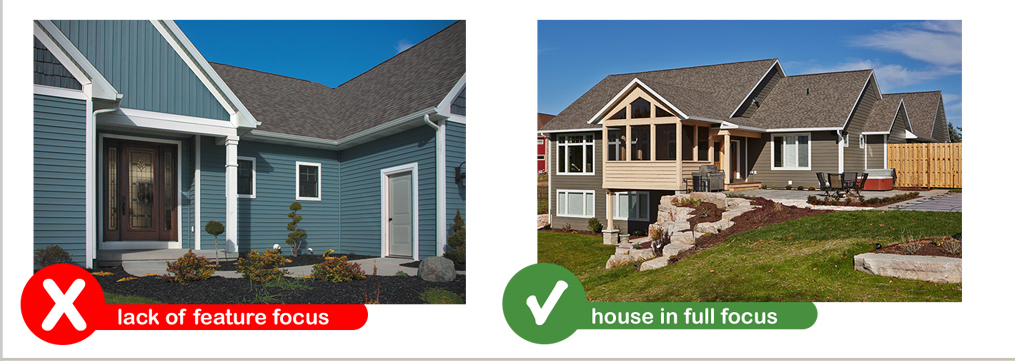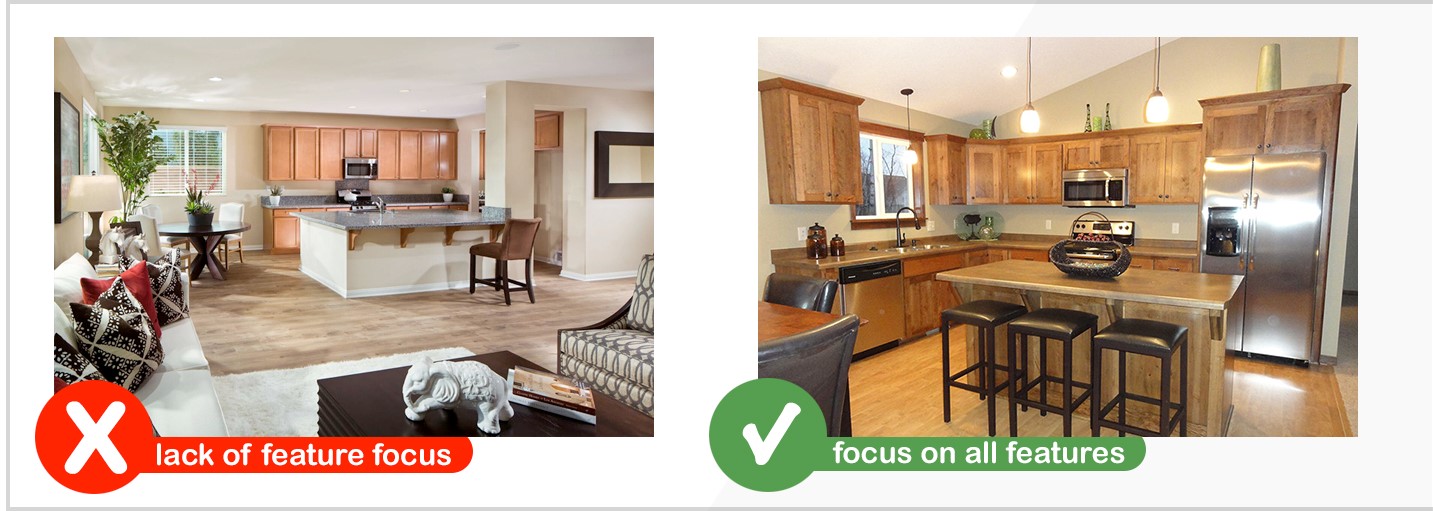
Before You Photograph
Welcome to a HomeVisign guide on how to take the right picture your room interior.
Cell phone cameras have come leaps and bounds over the years. Modern smart phones take great photographs, so feel free to use your phone’s camera when taking a picture of your room.
The following tips can be applied to any room, but I’ve outlined them using kitchen images, as they’re our most popular room.
First, you’ll want to properly set up your room, make sure to show off the space; not what’s in it. The room you’re photographing should be clean, clearing out distracting items such as toys and clutter, leaving decorative items that will be in the room even after the makeover. Plants and decorative flora can get in the way of the seeing all the features, removing them makes for a better visualizer experience.
While You Photograph
Try to steady your camera as you snap your picture, as introducing camera-shake will often result in a blurry photograph.
Focus the camera toward the features of the room. The idea isn’t to get a close-up of one particular feature, but to try to get the whole room in focus. This is beneficial in two ways:
- to see how our interactive features will look against the current features of your home
- to see how all of the interactive features will look together.
If possible, avoid low resolution images as they can introduce pixelation that can be passed onto the final product.
Try to angle the shot of your photograph so the floorboards or tile are straight on and not at a angle. This step isn’t required, but often leads to a more flattering photograph.
Use as much natural light as possible, and try to take the picture on a nice, sunny day. Open the curtains and blinds to allow the sunlight in to brighten the room. If the room is still a little too dark, turn on the lights.
Avoid taking the picture at night, as doing so can introduce grain into the image and make the features more difficult to see.
As you light your space, try to avoid sun flares that can shine into the camera lens. These happen most often when the sun is in frame.
Fill the frame up with the features of your room. Try not to stand too far back.
Avoid taking wide-angle photos as they will distort the features of a room and affect the final output of the custom designs.
Lastly, Try to take a landscape photograph. Portrait (or tall) photographs often don’t show enough of the living space, unless photographing smaller rooms such as bathrooms.
In the end, we’ll process any photo, but do your best to avoid dim lighting, blurriness, and pixelation within the photograph.














































